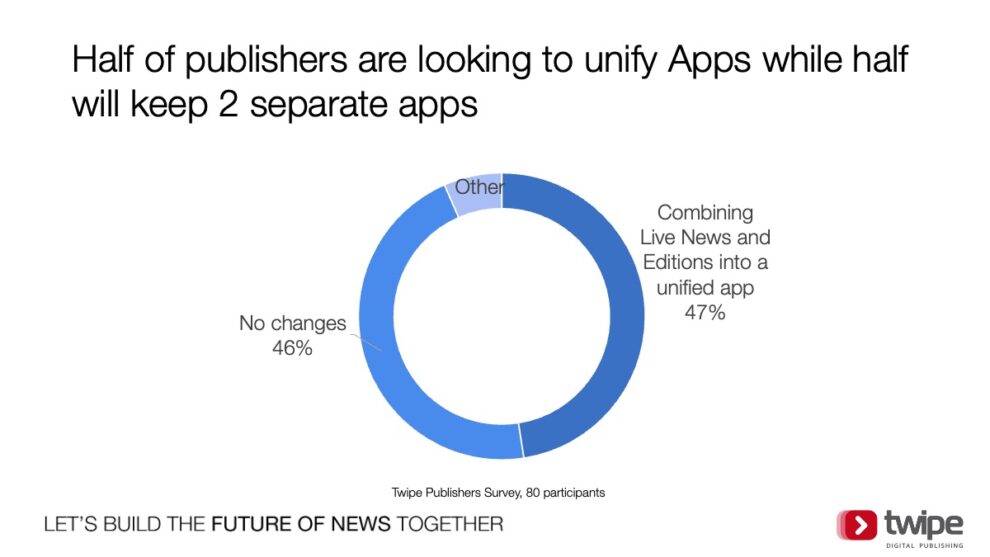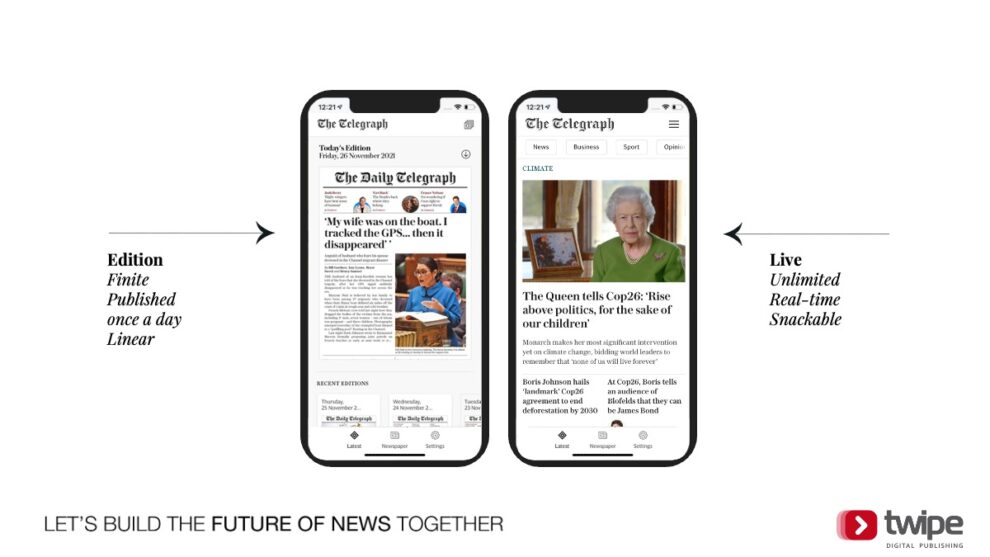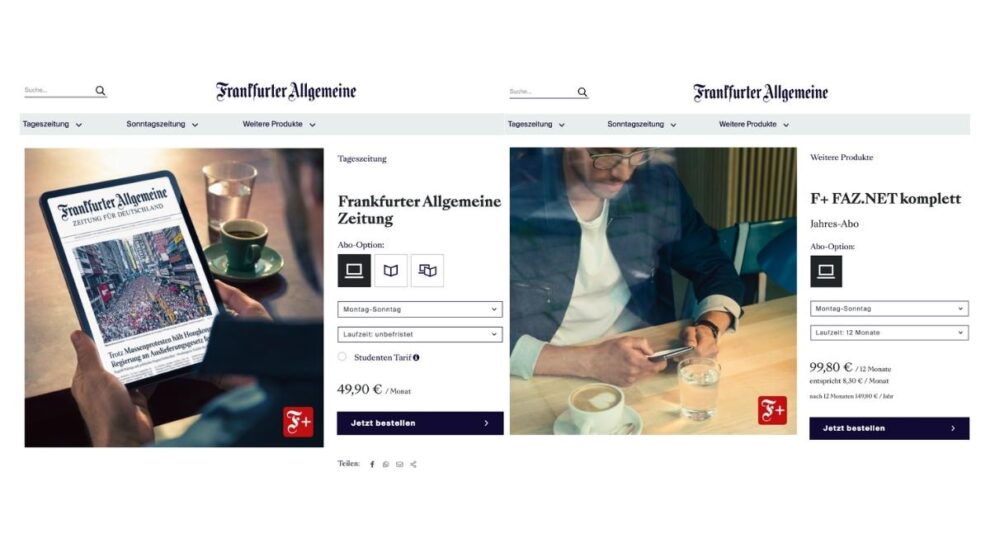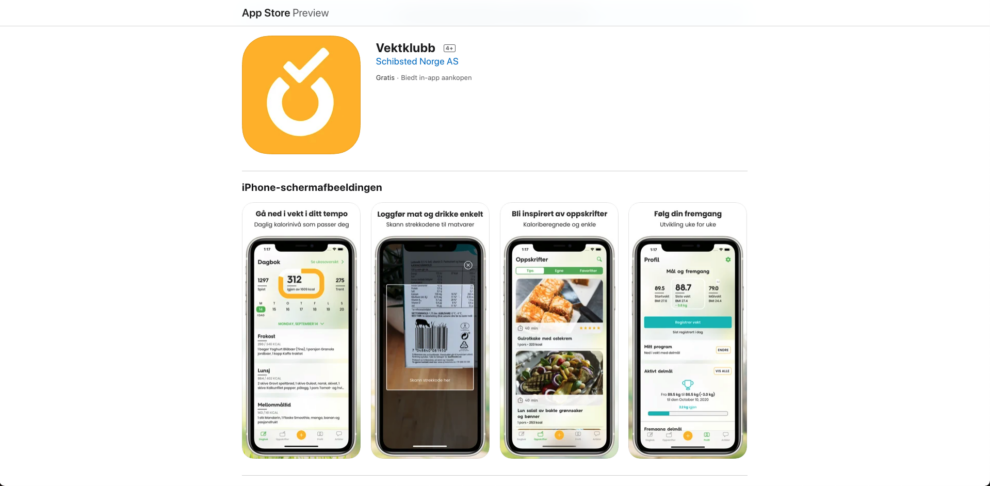Key decisions for your app strategy from the minds of industry product experts
A successful app strategy is at the core of successful subscriptions businesses for news. This week, we heard from product experts Mathias Douchet from The Telegraph, Mareike Obermann-Eberz from Frankfurter Allgemeine Zeitung (FAZ), Mathieu Halkes from Schibsted and our very own Matthieu Dubois from Twipe in our latest Future of News webinar.
We welcomed people from over 150 different news media businesses across 26 countries to learn more about key decisions for a successful app strategy.
Apps Matter
Simply put, smartphone usage is through the roof. Over 6.6 billion people are said to use smartphones across the world. To engage these users, app experiences must be flawless. On average, smartphone users use 10 apps each day and 30 apps a month. In the US, these people spent 3 hours 47 minutes on their apps each day. Therefore, news publishers need to become part of this exclusive club of apps.

Thankfully for news publishers, more than 80% of this usage time took place outside of the most popular apps. Even more positively, 70% people use apps to read magazines and newspapers each week. Clearly, publishers have the chance to become a partner in life for smartphone users. Therefore, successful apps will be built to fit into people’s daily lives.
There is no one size fits all model for your app strategy
Industry trends show that different publishers are experimenting with different strategies. Whilst some publishers choose to invest in niche and single purpose apps, others venture towards a unified app strategy. According to our publishers survey, this split is almost 50/50 in the industry. This depends heavily on each publisher’s subscriber strategy. In the webinar, we discussed 6 key factors that can drive either strategy. Get in touch to learn more.

FAZ follow a separate app model. Mareike Obermann-Eberz explained that the German publisher have no option but to keep their live news and editions apps separate. This is due to their differing price models for each app due to their differing audiences. Keeping these apps separate is at the heart of their subscriber strategy and so far, it has been a success for them.
The Telegraph broke this mould, Mathias Douchet explained, when they merged their live news app into their edition app. In 2015, The Telegraph built their edition-app to be focused on tablet users, and their live news app for mobile. Quickly however, they realised that the audiences between the different apps were not so different.
Users frequently mentioned confusion about which app to choose in the app store, often referring to them as the “Red App” and the “Blue App”. After choosing Twipe to develop their edition app in 2018, The Telegraph later decided to bring their live news experience, made via web technologies, inside “the more robust foundations” of their edition app.
It is important to remember that edition readers tend to be more habitual and therefore less open to change. This has simplified the experience for Telegraph subscribers with the 2 features still distinctively separate in the app. It has also simplified the internal management with product teams having to focus on just 1 app.

One fascinating insight given by Mathias was a question the team asked themselves at the start of the process. The Telegraph team stood away from their current offering to look at Day 1 and ask themselves, if they were to start again, how would they launch themselves? This is a daring experiment but a great one to put app decision making into context. This has paid off for The Telegraph as their app rating has gone up 4.0 to 4.3 in 5 months. Don’t be afraid to experiment.
Mathieu Halkes explained that inside Schibsted, a publisher with several titles across the Nordic region, app strategies vary… and for good reason. Whilst they have separate edition and live news apps, their app strategy also differs between titles which are tabloids and titles which are subscription focused.
For Schibsted’s tabloid titles, such as Aftonbladet, the front page is vitally important. The front page must be engaging. This is crucial as tabloids want to encourage their readers to scroll through their offering. Conversely, Schibsted’s subscription titles like Svenska Dagbladet are subscriber-only apps which offer a more exclusive and paid for feeling. At Schibsted, these apps are all built in the same way to allow for an easy native experience, but each interface is different to appeal to the correct audience.
Pricing should be a factor in determining your app strategy
One of the factors determining your app strategy should be the way you want to price your product. Deciding how to price digital products is often challenging. Ultimately, the end product of high-quality journalism is exactly the same as selling print. Justifications can therefore be made to keep the price points the same. But, this is a topic publishers struggle with due to the competition from other publishers and free news sites.
FAZ offer an extremely interesting pricing model for their apps. Mareike Obermann-Eberz highlighted that their different apps follow different pricing structures. These structures, in fact Mareike stated, are the highest priced news subscriptions in the German Speaking Market.

Subscribers to their Daily digital edition app are charged €49.90 a month, whereas subscribers to their live news app pay just over €12 a month. This model has been a success for FAZ who have seen growth in both sides of their business, and shows that there is hope for publishers who want to offer a premium price for their premium product.
Mathias Douchet explained that The Telegraph used to run a similar model prior to the unification of their app. This was one of the factors that delayed the unification of their apps. Previously, subscribers to their live news app paid £8.99 a month, with edition subscribers paying the higher price of £25.99. Following the unification of their app, The Telegraph shifted their solo digital subscription model to £12.99 a month. Since the shift, the growth of The Telegraph subscriptions has set them well on their way to achieving 1 million subscribers by 2023.
Driving subscriptions through websites to avoid tech giant punishment
Whilst pushing these subscriptions is great, publishers must look after their own revenue from them. Therefore, one takeaway that was particularly interesting from the webinar was that the news website is seen as the key subscription driver. This is promising for publishers in a time where they find themselves fighting tech giants to keep their fair share of subscriber revenue for their work.
Mathias Douchet emphasised how important this has been for The Telegraph in terms of data. Users subscribing via The Telegraph website provide the publisher with their data and this means The Telegraph team can better understand their customer needs. This is not the case with purchases made through third party vendors like Apple.
At FAZ, Mareike explained that whilst the majority of new subscribers do come to FAZ through the website, they do still see growth through in-app purchases. This is particularly the case inside the iOS apps and something that has become non-negligible.
Apps instead act as a hub of engagement and retention for publishers. Mathieu Halkes told the webinar that to do this, Schibsted have invested heavily in audio and video, including bringing hit podcasts in house. This is to ensure that subscribers have the best possible experience inside the Schibsted apps.
Our app has been built to drive engagement and retention more than direct acquisition
Mathias Douchet, Head of Product at The Telegraph
Niche apps and puzzles
The growth of niche and vertical apps has become a trend in the market. Publishers such as NRC have launched audio apps, whilst others like The Guardian have launched separate puzzle apps. In the Nordics, Schibsted have joined the hype. Mathieu Halkes gave the example of Schibsted’s weight-loss app “Vektklubb”.
The app has been popular for subscribers who log various aspects of their daily eating habits and weight loss. This daily aspect for their app is a vital part of their strategy towards becoming a partner in life. Recently, Schibsted chose to scale-up their app to expand its appeal. This has also seen the publisher drive more traffic and subscribers to their news apps as they follow a personalised methodology to lose weight. Whilst this app is a separate subscription, they see overlap with their news app subscribers.

FAZ offer 5 different apps as part of their strategy. Asides from the edition and live news apps, the publisher offer apps focused on specific news like the topics of the day. This is important for the publisher to keep their strong focus on the area of news. Mareike added that the publisher has explored the realm of puzzles before, however due to the vast availability of specialised apps already on the market, the publisher chose not to pursue the avenue.
Whilst puzzles are a key habit-forming part of their daily offering, Mathias Douchet mentioned that if The Telegraph were to launch other non-news apps, these would be launch externally to their unified news app. This is because The Telegraph want to keep their app as the place people come to purely for their quality journalism. The Telegraph pride themselves on their premium news feeling.
To learn more about how you can realise the potential of your app strategy, book a call with us.
Other Blog Posts

Stay on top of the game
Join our community of industry leaders. Get insights, best practices, case studies, and access to our events.
"(Required)" indicates required fields

